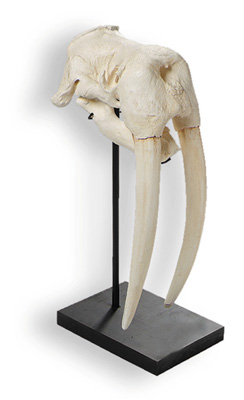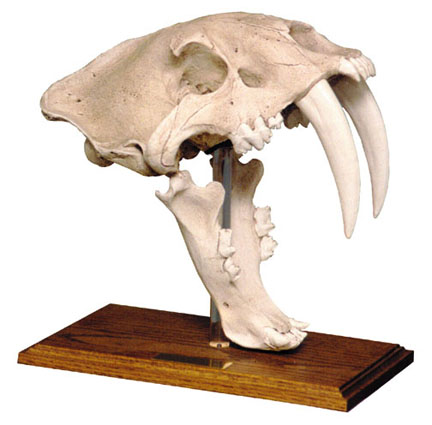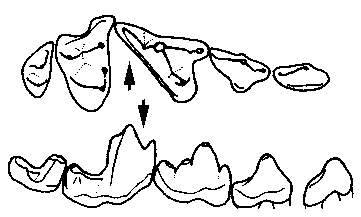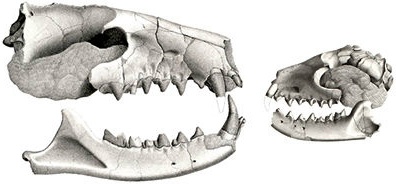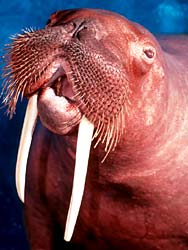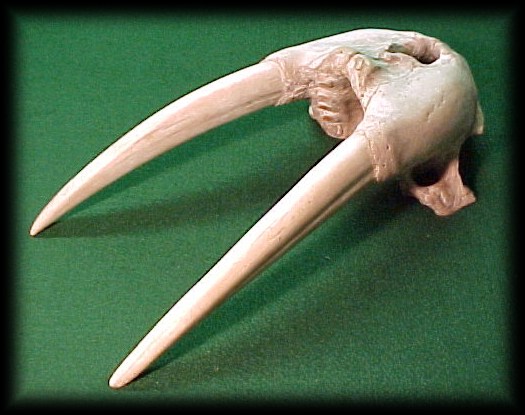One idea that has developed since Darwin that contributes to our understanding of evolution is continental drift. South America rather like pre-human contact Australia was a floating Ark of diverse and wonderful marsupials - then it hit North America!
Today only the opossums remain of those marsupials, South America is now a placental mammal kingdom, with a large range of Carnivora. So what happened? Well the obvious answer is that the placental mammals were fitter, but what you need to bear in mind is that rather than mutations happening in-situ and some proving to be an improvement à la Darwin, the process is now much more dynamic. Continents collide, animals that had evolved in isolation now meet, and in the process of the continents colliding the ocean currents shift and as a result the whole world's weather is altered. It then becomes, not which animals are better suited to the environment they evolved in but which can better survive and adapt to the changing conditions.
The winners that result from this very dynamic process are usually the more adaptable. It follows that highly specialized animals are an evolutionary luxury that can only develop in settled times, times of continental collision or climate change are likely to be a death sentence for the specialized.
The likely conclusion then is that the placental mammals were generally more adaptable than the marsupials.
Adaptability has also been suggested as part of the difference in the Carnivora and Creodonta competition. This comes down to the teeth.
Teeth are very important to paleontology because they survive. Teeth, the jaw bones and skull that they are associated with are very durable and show significant differences between species and between genera. (Genera are groups of related species, genera are then grouped into families, families into orders, and so on. Where only a few fossils survive identification of species is very difficult, a species will only tend to last for a million years before being supplanted, and so paleontologists who deal with much more sweeping timescales than that tend to talk about genera). The result of the survival of teeth is that identification of fossils often comes down to the teeth. Read a paleontological book and pages and pages can be devoted to the skull and teeth where the post-cranial skeleton (everything else) is lucky to get a paragraph.
Compare the pictures above, get a feel for the differences between the teeth types and you are behaving like a paleontologist! You can tell straight away that all three animals are flesh eaters. It's not just the big front teeth on the creodonts that gives it away but the fact that the rear teeth look like they have been designed for cutting not grinding as you would expect from a herbivore or pointed for gripping while swallowing whole like those of an insectivore. In fact the top picture has arrows to indicate the cutting action of the very specialised carnassial teeth of members of the Carnivora order. If you own a cat or a dog you have perhaps seen them turn their head to one side when eating to bring this cutting action into play.
The creodonts have a very similar structure but the key difference lies in the fact that their cutting teeth are their back teeth. The carnivora by contrast have another pair top and bottom behind the carnassials. Now I don't know that anyone is convinced that this is the decisive difference but I have seen it suggested that the fact that carnivores have a more generalised tooth behind their meat shearers allows them to adapt to a less than wholly meat diet in times of hardship. The difference in adaptability is slight but over the course of twenty million years it doesn't take much of a difference to add up to the one order being extinct and the other having been at the top of the evolutionary arms race until the bow and arrow came along.
